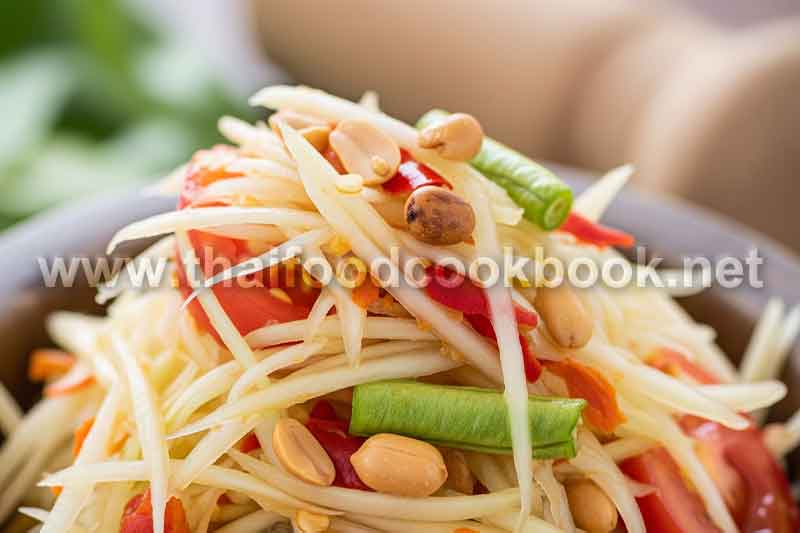How to Make Authentic Som Tum at Home: A Step‑by‑Step Guide
Many food lovers are eager to recreate Thai dishes at home, but few realize that mastering Som Tum — the famous Thai green papaya salad — requires more than just throwing ingredients into a mortar. The challenge lies in balancing sweet, sour, salty, and spicy elements with traditional ingredients that may be unfamiliar or difficult to find outside of Thailand. Fortunately, with the right tools and a detailed recipe, anyone can craft a delicious and authentic version of Som Tum in their own kitchen. This guide offers step-by-step instructions using accessible techniques, traditional ingredients, and practical tips to help you confidently create this iconic dish. If you’ve ever wondered how to achieve the perfect taste and texture of Som Tum at home, this guide will walk you through everything you need to know.
Essential Ingredients for Traditional Thai Green Papaya Salad
To make authentic Som Tum, you need to gather ingredients that represent the true flavor profile of Thai cuisine. These are commonly found in Asian grocery stores or specialty markets, and they are the backbone of a well-balanced salad. Here’s what you’ll need:
- Green papaya – unripe, firm, and shredded into thin strips
- Thai chilies – for spice and fragrance
- Garlic cloves – usually pounded raw into the salad
- Fish sauce – adds a salty umami depth
- Palm sugar – to balance sourness and spice
- Lime juice – the key sour element
- Tomatoes – cut into wedges for juiciness and color
- Roasted peanuts – optional for texture and nutty flavor
- Dried shrimp – for a hit of umami and tradition
If you’re looking for more insights on authentic Thai ingredients, visit this comprehensive guide to Thai pantry essentials which outlines substitutes and sourcing tips.
Preparing and Shredding Green Papaya the Right Way
One of the most critical steps in making Som Tum is handling the green papaya properly. Without the right preparation, the texture will not deliver the iconic crisp crunch that defines this salad. Follow these simple steps:
- Peel the green papaya with a sharp vegetable peeler.
- Cut the papaya in half lengthwise and remove the seeds.
- Use a julienne peeler or traditional Thai knife technique to shred the flesh into thin, noodle-like strips.
- Soak the shredded papaya in ice water for 15 minutes to enhance crispness.
Pro tip: Always drain the papaya well and gently pat it dry before mixing with other ingredients. This helps the dressing cling better and keeps the salad from becoming soggy.
Step‑by‑Step Instructions to Make Som Tum Like a Thai Local
Now that your ingredients are ready, it’s time to assemble the salad. The key here is to use a mortar and pestle (preferably clay and wooden) to gently bruise the ingredients together rather than over-pounding them. Here’s how to prepare authentic Som Tum at home:
- In a mortar, pound 2–3 cloves of garlic and 3–4 Thai chilies until broken down.
- Add a teaspoon of dried shrimp and a handful of roasted peanuts. Pound lightly to mix.
- Mix in cherry tomato wedges and gently crush them to release juices.
- Add 1 tablespoon of fish sauce, 1 tablespoon of lime juice, and 1 teaspoon of palm sugar. Mix thoroughly.
- Finally, add 1 cup of shredded green papaya and toss everything with a spoon while continuing to bruise gently.
Adjust seasoning to taste by adding more lime, fish sauce, or palm sugar. Serve immediately with sticky rice, grilled meats, or as a standalone dish.
Tips for Variations and Common Mistakes to Avoid
There are countless variations of Som Tum you can try once you’ve mastered the basic version. Each has its own personality and regional character. Here are some ideas:
- Som Tum Thai – with roasted peanuts and dried shrimp
- Som Tum Poo – includes pickled field crab for added brine
- Som Tum Pla Ra – adds fermented fish sauce for umami depth
- Vegetarian Som Tum – omits fish sauce and shrimp, using soy sauce instead
Common mistakes to avoid:
- Over-pounding ingredients can turn the salad mushy.
- Using ripe papaya will make it too soft and sweet.
- Skipping palm sugar can lead to an imbalanced flavor profile.
Experimenting is encouraged, but staying true to the spirit of Som Tum will always result in the best taste and authenticity.
Conclusion: Bring Thai Flavors into Your Kitchen
Learning how to make authentic Som Tum at home is more than following a recipe — it’s about capturing the essence of Thai cuisine. With the right ingredients, proper preparation, and balance of flavors, this iconic dish can be yours to enjoy anytime. Whether you’re cooking for friends, exploring Thai food for the first time, or trying to reconnect with traditional flavors, this guide empowers you to create Som Tum with confidence. By practicing these steps and respecting the roots of the dish, you’re not just cooking — you’re continuing a vibrant culinary tradition that spans generations.


